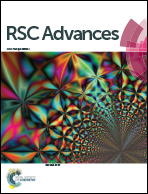Structural insights into targeting of the colchicine binding site by ELR510444 and parbendazole to achieve rational drug design†
Abstract
Microtubules consisting of α- and β-tubulin heterodimers have proven to be an efficient drug target for cancer therapy. A broad range of agents, including ELR510444 and parbendazole, can bind to tubulin and interfere with microtubule assembly. ELR510444 and parbendazole are colchicine binding site inhibitors with antiproliferative activities. However, the lack of structural information on the tubulin–ELR510444/parbendazole complex has hindered the design and development of more potent drugs with similar scaffolds. Therefore, we report the crystal structures of tubulin complexed with ELR510444 at a resolution of 3.1 Å and with parbendazole at 2.4 Å. The structure of these complexes revealed the intermolecular interactions between the two colchicine binding site inhibitors and tubulin, thus providing a rationale for the development of novel benzsulfamide and benzimidazole derivatives targeting the colchicine binding site.



 Please wait while we load your content...
Please wait while we load your content...